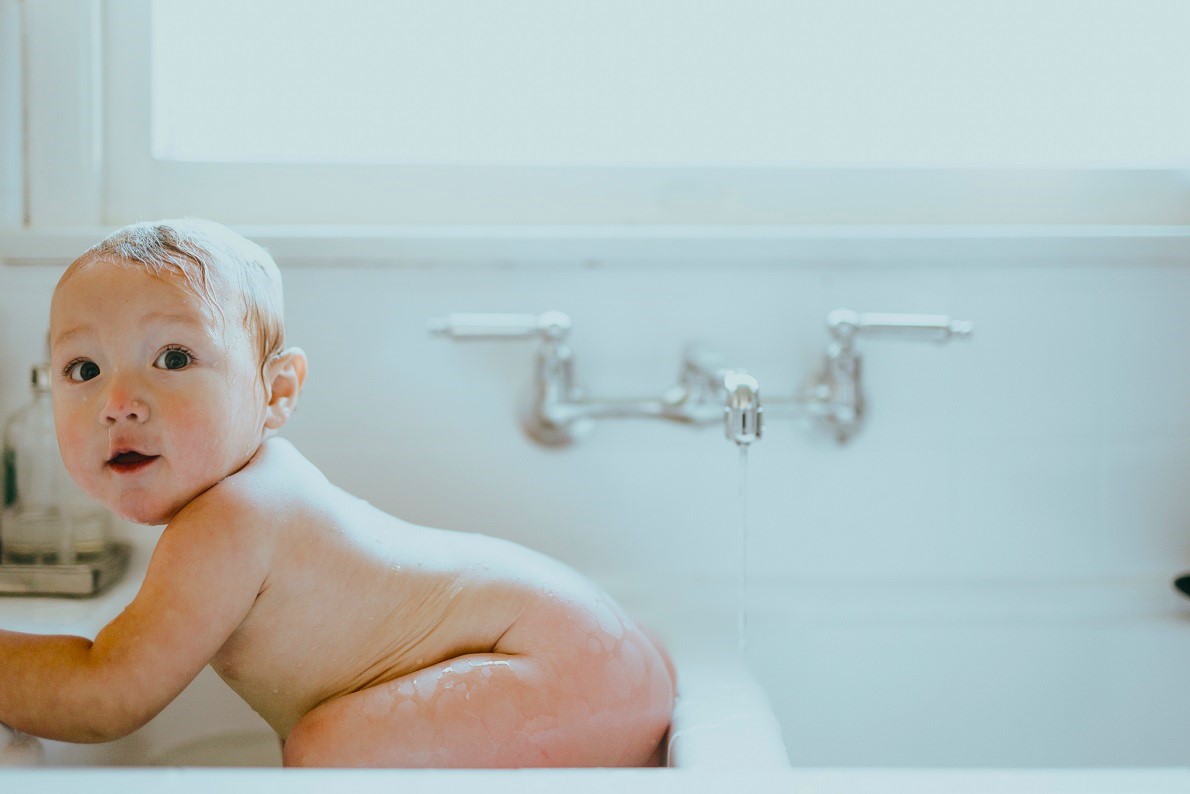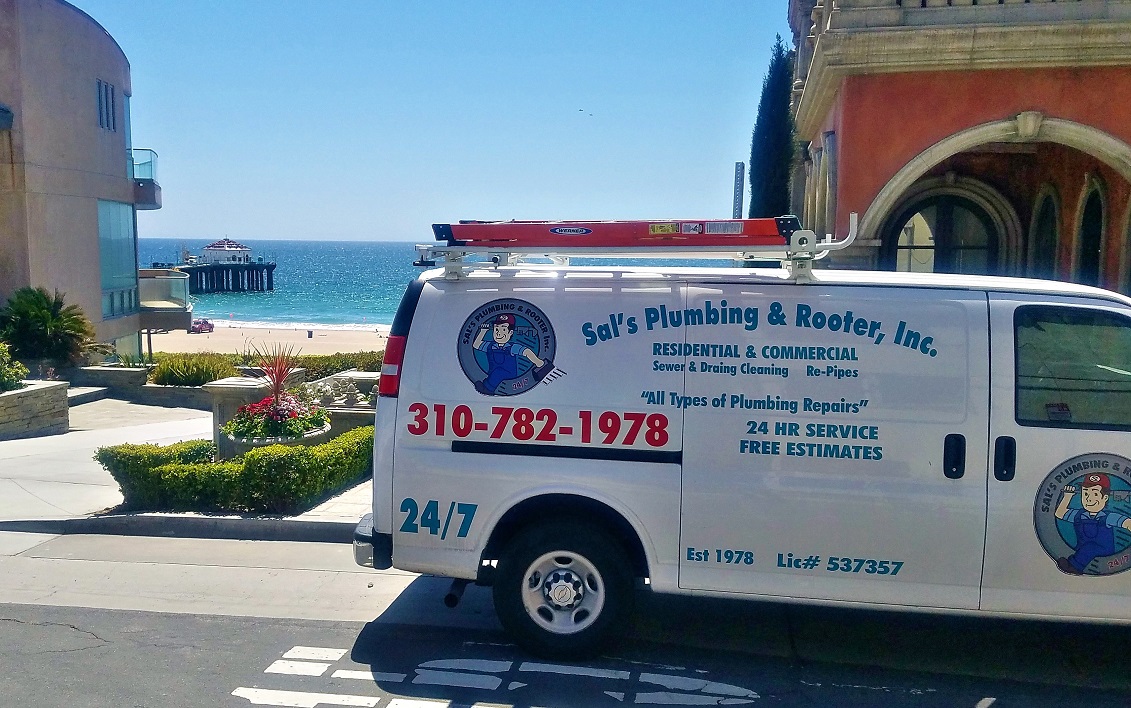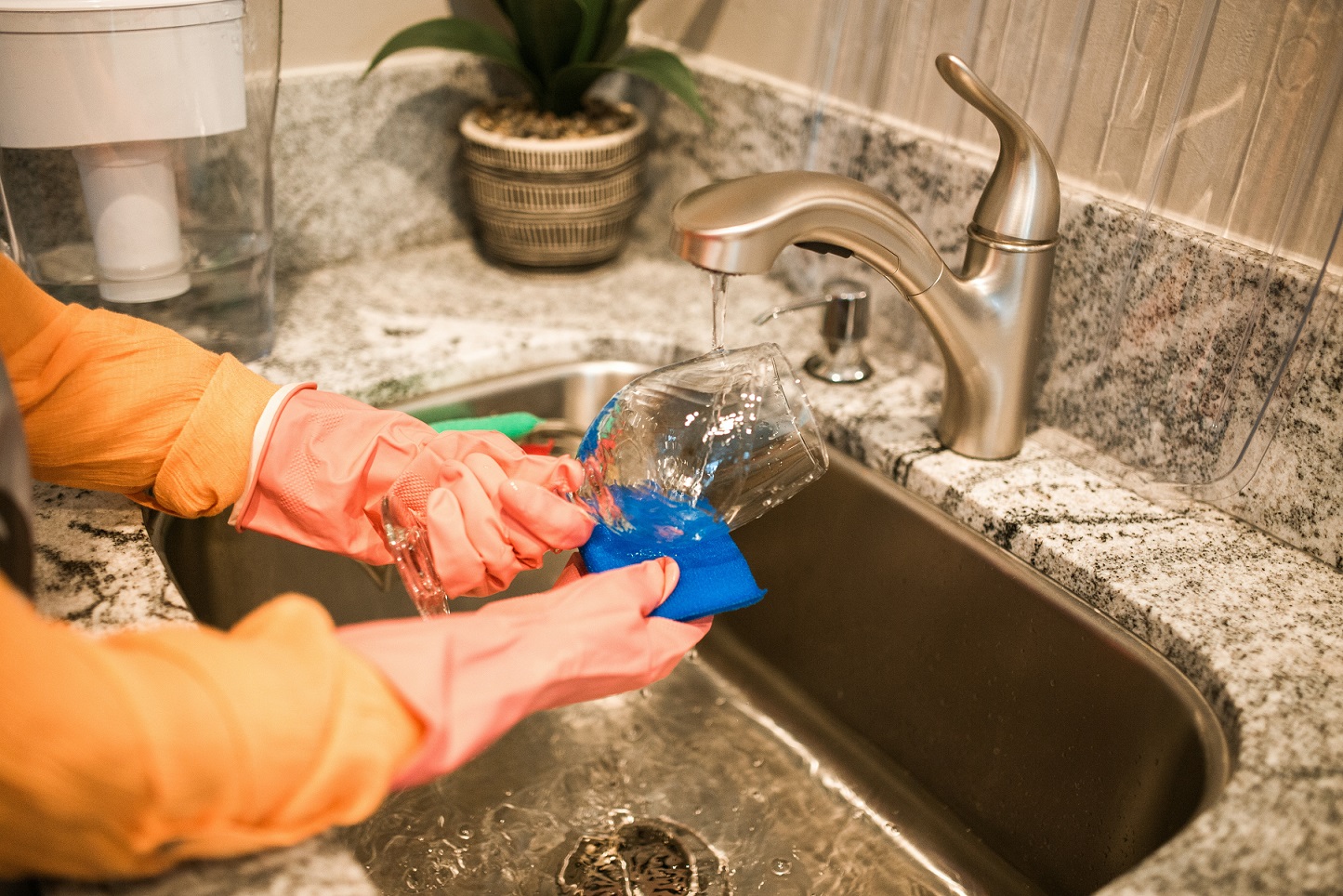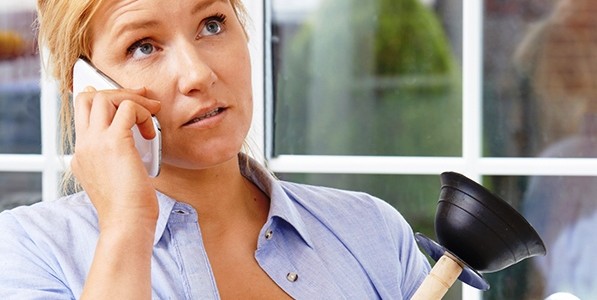-
Service Areas
South Bay
Los Angeles
Long Beach -

call us now
(310) 692-4183

email us
info@salsplumbing.com
Resources

12 Feb. 2024
Easy Sink Unclogging: A Step-by-Step Guide
Plumbing problems in your home can be expensive. If you don’t address them, you can cause irreversible damage to your home. It’s important to pay attention to the signs, no matter how small they may seem and call an emergency plumber immediately. Sal’s Plumbing as been the best plumber in the South Bay since 1979.
How to Unclog a Sink: A Step-by-Step Guide
There’s nothing more frustrating than a sink that won’t drain. Whether it’s a slow trickle or a complete stoppage, a clogged sink can throw a wrench in your daily routine. But before you call a plumber, know that most clogs can be cleared with a few tools and a little know-how. This guide will walk you through simple, effective methods to unclog your sink and get your water flowing freely again.
Getting Started: What You’ll Need
Before diving into the task at hand, it’s important to gather the necessary tools and materials. A good plunger, some baking soda and vinegar, a bucket, and a pair of rubber gloves are the basics that will handle most clogs. For more stubborn blockages, you might need a plumber’s snake or a wrench to remove the P-trap. Having everything at arm’s reach will streamline the process and help you tackle the clog efficiently.
Tools and Materials
A plunger is often the first line of defense against a clogged sink. Ensure you have one appropriate for sink use—usually a cup plunger—rather than a flange plunger, which is designed for toilets. Baking soda and vinegar can work wonders as natural, chemical-free decloggers. Keep a bucket handy to catch any water or debris that may come out from the pipes. If the clog is persistent, a plumber’s snake, also known as a drain auger, can help you reach deeper into the drain.
Safety First: Preparing Your Work Area
Before you begin, it’s important to prepare your work area to prevent mess and ensure safety. Clear out any items from under the sink and place a bucket underneath the P-trap to catch any spillage. Don gloves to protect your hands from debris and any cleaning agents you might use. Make sure the area is well-ventilated, especially if you end up needing to use chemical cleaners. Safety glasses aren’t a bad idea either, as they’ll protect your eyes from any possible splashes.
Step-by-Step Unclogging Methods
Now that your work area is prepped and your tools are at hand, it’s time to tackle that clog. Starting with the simplest method first saves time and effort. Often, a clog can be resolved without the need for disassembling pipes or using harsh chemicals. Let’s go through the steps to clear your sink.
The Plunger Technique
First, fill the sink with enough water to cover the plunger’s cup. Place the plunger over the drain hole, ensuring a firm seal. Vigorously pump the plunger up and down several times, then sharply pull it off the drain opening. The pressure created should dislodge any minor clogs. Repeat if necessary, and check to see if the water starts to drain.
Natural Solutions: Vinegar and Baking Soda
If plunging doesn’t do the trick, try a natural chemical reaction to break down the clog. Pour half a cup of baking soda directly into the drain, followed by half a cup of white vinegar. The mixture will fizz and bubble, working to dissolve grease and grime. Cover the drain with a plug or a cloth to keep the reaction contained, and let it sit for an hour. Then, flush the drain with hot water to clear out the loosened material.
Manual Removal: P-Traps and Plumbing Snakes
Sometimes a clog is too stubborn for plunging or natural solutions. In this case, you may need to remove the P-trap—the curved pipe under the sink—to clear the blockage directly. Place a bucket underneath to catch any water and debris, and unscrew the connectors holding the trap in place. Once removed, clean out any accumulated gunk and reattach the trap. If the clog is deeper down, a plumbing snake can be fed into the pipe to dislodge it. Insert the snake into the drain, turning it to catch and break apart the clog, then slowly pull it out.
Advanced Tips for Tough Clogs
When natural methods and manual removal don’t work, it’s time to consider other options. Some clogs are particularly stubborn and may require a more aggressive approach. However, it’s important to use these methods judiciously, as they can be harsh on your plumbing if used incorrectly.
When to Use Chemical Drain Cleaners
Chemical drain cleaners can be effective against tough clogs, but they should be used as a last resort. These cleaners contain powerful chemicals that dissolve hair, grease, and other common blockages. When using a chemical cleaner, carefully follow the instructions on the label, and don’t overuse them, as they can corrode pipes over time. Pour the recommended amount down the drain, wait for the specified time, and then rinse thoroughly with hot water.
Power Tools: Plumbing Augers
For the most challenging clogs, a plumbing auger, or electric snake, can be the tool that finally gets the job done. These power tools are more effective than manual snakes and can reach further into the plumbing system. Feed the auger’s cable into the drain until you feel resistance, then activate the motor to break through the clog. As with any power tool, use caution and read the safety instructions before operating.
Maintenance Tips to Prevent Future Clogs
Preventing clogs is easier and less frustrating than dealing with them after they occur. Regular maintenance can help keep your sink draining smoothly and prevent the buildup that leads to clogs.
Regular Cleaning Routines
Make it a habit to clean your drains regularly. Flushing your sink with boiling water once a week can help melt away fat and grease before they solidify in the pipes. Using a mixture of baking soda and vinegar monthly can also maintain a clear drain. Installing a sink strainer can catch debris that would otherwise contribute to clogs, reducing the likelihood of blockages.
What Not to Put Down Your Sink
Being mindful of what goes down your sink is crucial for preventing clogs. Avoid disposing of grease, coffee grounds, and food scraps in your sink. Even if you have a garbage disposal, fibrous materials like celery and onion skins can cause issues. Educate everyone in your household about these guidelines to ensure your sink remains clear.
Wrapping Up: Ensuring a Clear Drain
After working through the steps to unclog your sink, it’s important to do a final check to ensure everything is flowing smoothly.
Final Checks and Tests
Once you’ve cleared the clog, run hot water down the drain to ensure it’s completely open. Check for leaks under the sink, especially if you’ve removed the P-trap. If everything looks good and the water is draining quickly, you’ve successfully unclogged your sink.
When to Call a Professional
If you’ve tried everything and your sink is still not draining, it may be time to call the best plumber in Torrance. Sometimes clogs are symptomatic of more significant issues further down the line that require specialized tools and expertise. Don’t be afraid to call in the experts when necessary. It’s better to resolve the issue properly than to risk further damage to your plumbing.
Unclogging a sink can be a straightforward DIY task with the right tools and knowledge. By following these steps, you can save yourself the cost and hassle of a plumber’s visit. Remember, regular maintenance is key to keeping your drains clear and avoiding future clogs. With a little effort, you can keep the water flowing and your sink in top shape.
If any of these Plumbing Problems persist and you don’t have the time to deal with them, please give us a call at (310) 692-4183, we are happy to stop by. Chances are that we have a plumber in Redondo Beach or a plumber in Manhattan Beach or a plumber in Long Beach when you need us!
Thank You!
This blog post was written by eMaximize, the top plumber marketing agency in California.

27 Sep. 2023
Plumbing Tips For Coastal Homes
Plumbing problems in your home can be expensive. If you don’t address them, you can cause irreversible damage to your home. It’s important to pay attention to the signs, no matter how small they may seem and call an emergency plumber immediately. Sal’s Plumbing as been the best plumber in the South Bay since 1979.
Homes near the beach often face unique challenges when it comes to plumbing due to the corrosive effects of saltwater, sand, and high humidity. Here are some plumbing tips for beach homes to help you maintain your plumbing system in a coastal environment:
- Install Corrosion-Resistant Plumbing Materials:
- Use corrosion-resistant materials like PVC, CPVC, PEX, or copper nickel for your plumbing pipes and fixtures. These materials are less susceptible to corrosion from saltwater and salty air.
- Regularly Inspect for Corrosion:
- Periodically inspect your plumbing system for signs of corrosion, such as rust or pitting on metal pipes and fixtures. Address any corrosion issues promptly to prevent leaks or pipe failures.
- Flush Pipes with Fresh Water:
- After spending time at the beach, flush your plumbing system with fresh water to remove salt and sand residue. This includes running fresh water through faucets and showerheads.
- Invest in a Whole-House Water Filtration System:
- Consider installing a whole-house water filtration system to remove impurities, including salt and minerals, from your water supply. This can help prolong the life of your plumbing fixtures and appliances.
- Elevate Plumbing Fixtures:
- Raise plumbing fixtures, such as toilets and sinks, above potential flood levels to minimize damage in case of a coastal flood or storm surge.

- Regularly Maintain Sump Pumps:
- If your home is prone to flooding, maintain your sump pump and ensure it is in good working order. Regular testing and maintenance can prevent water damage in coastal areas prone to flooding.
- Protect Outdoor Faucets:
- Install frost-proof outdoor faucets to prevent freezing during colder months. Also, consider covering outdoor faucets when not in use to protect them from the salty air.
- Inspect and Maintain Septic Systems:
- If your home uses a septic system, have it inspected and pumped regularly to prevent issues. Coastal areas may have a high water table, which can affect septic systems.
- Use Non-Corrosive Plumbing Fixtures:
- When choosing plumbing fixtures, opt for non-corrosive options made from materials like stainless steel or brass.
- Regularly Check for Leaks:
- Periodically inspect your plumbing for leaks, especially in areas that are less frequently used. Leaks can go unnoticed for a long time in vacation homes.
- Consider Hurricane Shut-off Valves:
- In hurricane-prone areas, consider installing shut-off valves for your water supply that can be easily closed in case of a storm to prevent water damage.
- Have a Reliable Plumber’s Contact:
- Keep the contact information of a local plumber who is familiar with the unique challenges of coastal plumbing for emergency repairs or maintenance.
By following these tips and staying proactive with maintenance, you can help protect your plumbing system in a coastal environment and minimize the risk of corrosion and damage from saltwater and sandy conditions.
Summary of Plumbing Tips For Coastal Beach Homes
If any of these Plumbing Problems persist and you don’t have the time to deal with them, please give us a call at (310) 692-4183, we are happy to stop by. Chances are that we have a plumber in Redondo Beach or a plumber in Manhattan Beach or a plumber in Long Beach when you need us!
Thank You!

25 Apr. 2023
Five Signs Your Home Needs a Plumber
Plumbing problems in your home can be expensive. If you don’t address them, you can cause irreversible damage to your home. It’s important to pay attention to the signs, no matter how small they may seem and call a your emergency plumber immediately. Sal’s Plumbing as been the best plumber in the South Bay since 1979.
Sometimes you might not even know that there’s a problem. Therefore, it’s crucial to analyze the following hidden signs.
How You Can Tell Your Home Needs a Plumber
1. Low Water Pressure
There’s nothing more annoying than jumping in your shower and having to run around to get wet. Low water pressure may be an indication that there’s a clog in your pipes. A leaking pipe can also block water flow which can make the water pressure. Low water pressure throughout your home is a clear sign that you have a plumbing leak or clog and may need to call a drain clean plumber.
It’s important to figure out if your leaking pipe is confined to one area of your home or whether it’s affecting your entire plumbing system. If your water is leaking in more than one location, turn off all your taps and check your water meter. If the number of gallons has changed on your water meter, you might have a leak that needs to be repaired.
2. Slow Drainage
Your sink and showers can build-up debris like hair, soap and other bathing products. When pipes throughout your house become slow to drain, you might have a clog in the main sewer line. Clearing out the blockage yourself sometimes causes more damage to your pipes. It’s important to call the best plumber as soon as possible.
3. Damaged Wallpaper or Paint
If you notice cracking, peeling or blistering paint on your walls or ceiling, this may be a sign of a plumbing leak. Drywall can start to have a bubble-like texture and eventually fall apart. If your drywall gets damaged it will have to be torn out, patched, and painted. This can be an expensive process as you may also require an interior painter.
An surprisingly expensive water bill is usually a clear sign that there is some major leaking going on in your plumbing system. If you can’t explain a sudden increase in your water bill, don’t hesitate to call an emergency plumber to investigate. High water bills are usually the first sign that your house needs to be examined by a professional plumber like Sals Plumbing.
5. Mold or Mildew
You can also use your sense of smell to sniff out plumbing problems in your home. Mildew is a musty smell that can become increasingly pungent. It can grow in areas of your home that have a plumbing leak. It will usually develop within 48 hours of water exposure. However, sometimes they’re invisible to the human eye as they can be concealed within your floor due to a broken heating pipe. If you notice your tiles bulging, this could be a sign of a leak.
Another sign you might need a plumber is mold, which is a fast-spreading bacteria that feeds on the moisture of different structural materials. Mold can also lead to health problems such as sore throat, coughing, headache, watery eyes, and sneezing. Contact your local plumber immediately if you find mold in your home, as it could be a sign of a plumbing leak.
If any of these Plumbing Problems persist and you don’t have the time to deal with them, please give us a call at (310) 692-4183, we are happy to stop by. Chances are that our emergency plumbers are nearby in the South Bay and from LAX to Long Beach,.
Thank You!

09 May. 2022
Avoid Common Plumbing Problems In Your Home
Sal’s Plumbing has been providing expert plumbing services in the South Bay and Los Angeles for over 30 years. Whether it’s leak detection or a simple drain clean, our expert plumbers enjoy serving our customers in the South Bay and surrounding area. That said we are passing along some home improvement information to help you avoid common plumbing problems in your home.
Whether you own your own home or rent an apartment, you will most certainly run into a few toilet, sink or bathtub challenges along the way. It is not always possible to get a plumber to the scene right away, either, so it is important to know what to do about a few common plumbing problems.
Toilet Will Not Flush
This is often a very basic problem that can be resolved relatively easily. The first thing to do is to take the lid off of the tank and look inside. Inside the porcelain tank, there should be a chain with a hook attached to the flushing handle and a rubber stopper. Sometimes the hook and chain have simply fallen out of the handle. Thread it through, replace the tank’s lid and boom! Your toilet is back in business.
Broken Chain or Handle
There are times when the internal flushing device has broken due to breakage of the chain or even the external handle, if it’s plastic. In this case, remove the broken parts, place all in a plastic bag and drive to the local home improvement warehouse in your neighborhood. Go to the plumbing aisle and find a device that matches the broken one. Return to the malfunctioning bathroom and replace. Boom! The important thing is to remember where everything goes before taking it apart.
The Toilet is Clogged
There are so many things that can clog a toilet and often some toilets are “sensitive” due to the pipes. What is a homeowner to do? Keeping a plunger in every bathroom is highly recommended. The plunger is a tool with a rubber suction cup attached to a pole. The internal toilet opening in the back of the bowl underwater is first covered with the rubber suction cup. The tool is pushed up and down repeatedly forcing the clog to be pushed on its way down and out into the sewer system.
Garbage Disposal Will Not Turn On
Garbage disposals are handy appliances for getting rid of food scraps by grinding it up and sending it out through the pipes. There are times that something has caused it to stall and it simply will not turn on with a flick of the switch. What to do? Well, before panicking, calling a Los Angeles plumber or replacing the disposal, open the cupboard doors and peer in below the sink. There upon the black cylindrical disposal, is a tiny red re-set button. Push it. Try the switch again. Most of the time, like magic, the garbage disposal will reset itself and return to normal operations.
If any of these Plumbing Problems persist or you don’t have the time to deal with them, please give us a call at (310) 692-4183 , we are happy to stop by. Our plumbing technicians are in the South Bay all day, every day and from LAX to Long Beach,.
Thank You!
